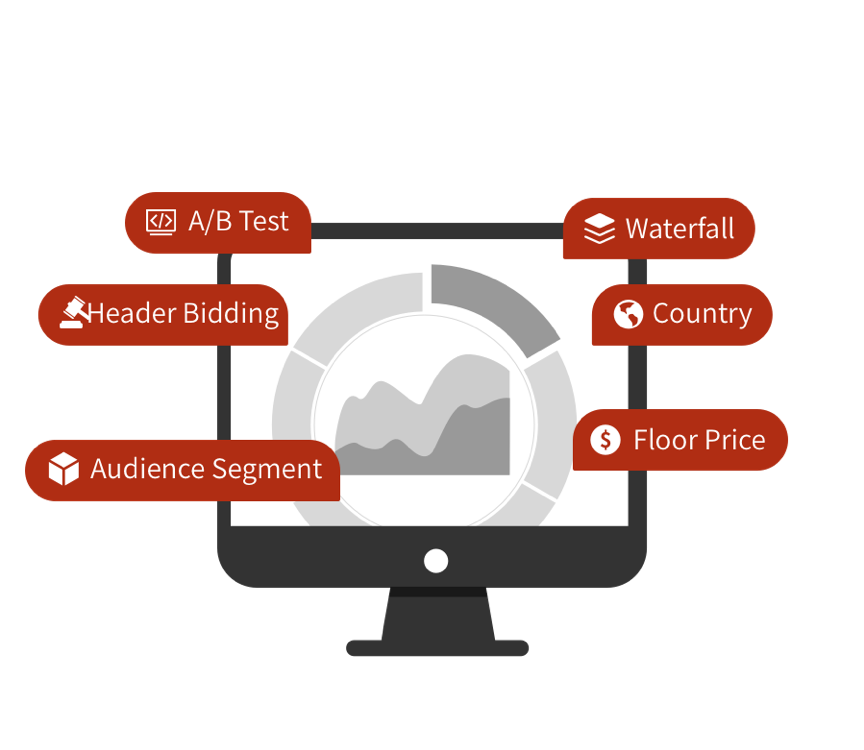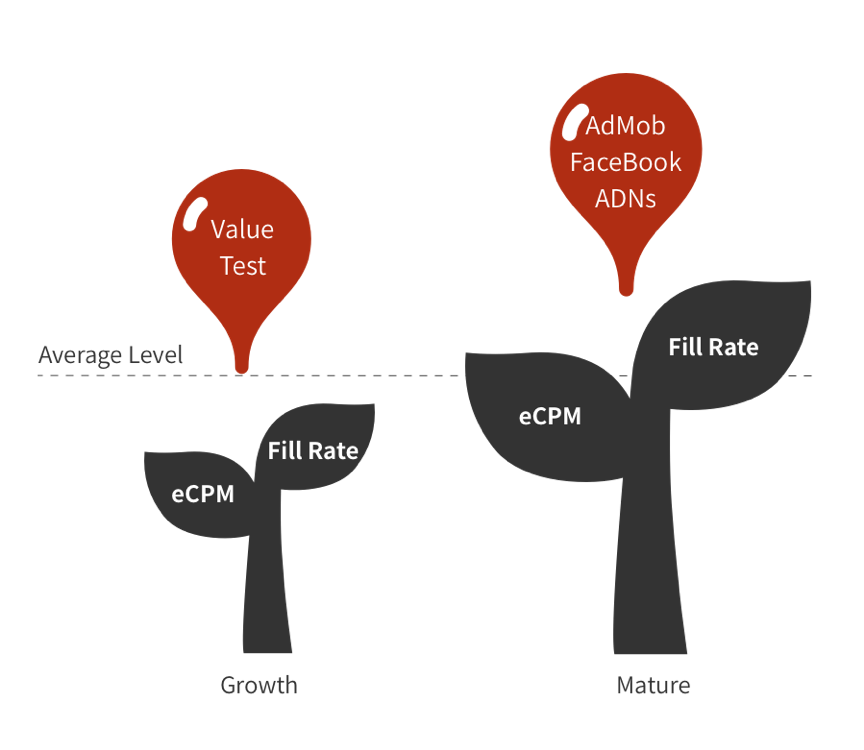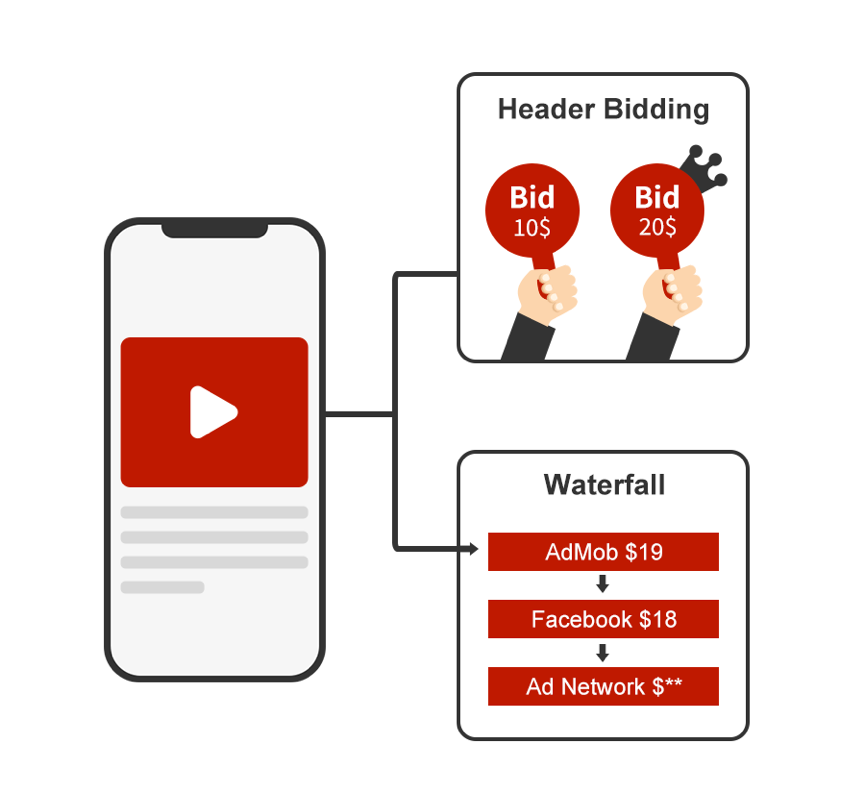There are some frequently asked questions among new beginners of mobile monetization in our
communication with developers, such as: what monetization channels are available on the market, what
about their respective regions of strength, data performance and technical edge?
A mature monetization approach nowadays is usually to choose a Mediation and integrate its SDK into
your app, so that you are able to manage multiple Ad Networks on a unified platform, significantly
simplifying integration and maintenance and improving monetization efficiency.
So today let’s look at how to choose Mediation and Ad Networks. The feedbacks and monetization
experiences from successful developer friends in the industry also contributed to the suggestions
offered below.
1. How to choose Mediation?
Mediation is a mobile app solution, allowing for managing multiple Ad Networks at the same time
through a single SDK, to help maximize fill rate and increase revenue. It also offers revenue
reporting and other metrics. Here are two major aspects developers should consider before deciding
which Mediation to go with: function and trend.
The function aspect includes the platform’s operability, real-time reporting capability,
supported Ad Networks, automation, third-party Ad Network UI and the capability to cache
multiple ads at the same time, etc.
The trend aspect refers to advanced features such as Header Bidding, integration with user
acquisition data and A/B test function, etc.
A premium Mediation is able to leverage each Ad Network’s advertiser volume, regions of strength and
advanced technical features, optimize ad inventory by creating different waterfalls for different
placements and countries, and support Header Bidding and such, to offer maximized fill rate, eCPM
and revenue.

We’ll explore further on mediation in following articles, please stay tuned.
Now we’ve chosen a Mediation, the question then comes to what Ad Networks to choose.
Generally, developers would integrate 5 to 10 Ad Networks for the Mediation.
2. How to choose Ad Networks?
Following are developers’ seven major considerations in choosing Ad Networks:
1) Stability and weight of the Ad SDK
In order to start show ads and monetize, developers need to integrate the Ad SDK into their own app.
This means, 1) any bugs in the Ad SDK will hamper user experience to some extent, and 2) Ad SDK
iteration will potentially delay the app to go live, in other words, too frequent iterations may
cause user churn. That being said, a premium Ad Network should possess a high level of stability.
Meanwhile, it’s known that the size of app package impacts installation, user retention and user
acquisition cost, especially for game developers. When faced with large packages, users tend to
consider network environment and device storage, then to make a choice whether to download or keep
the app. This asks for a third-party SDK to be designed small and compact, which generally ranges
from a few hundred to a few thousand KBs. For a same SDK, its added weight to iOS app package is
usually greater than that to Android app package.
Therefore, developers need to weigh the influence of the Ad SDK’s size and stability to their
apps.
2) Supported placement types
In
Ad Format Guidelines, we introduced four main ad formats: Banner,
Native, Interstitial, and Rewarded Video. However, not every Ad Network supports all four types.
At present, mainstream platforms in the overseas market support video ads, few support Banner and
Native ads. Games developers are suggested to have Rewarded Video and Interstitial ads as their
primary choices, while utilities developers are suggested to monetize with Native and Interstitial
ads. That is to say,
developers should choose Ad Networks according to their preferred placement
types also.
3) Traffic map and regional advantage
For those developers who don’t yet have a clear market strategy, AdMob and Facebook might be the
first choices to test monetization globally. An Ad Network’s competitive aspects (including
advertising resources, marketing strategies, accurate targeting capabilities, etc.) differ from
tier-1 countries (the U.S., Japan, Korea) to tier-3 and tier-4 countries (India, Indonesia,
Southeast Asia, etc.), therefore developers should choose the relatively advantageous platforms in
corresponding regions when there is already a market strategy and a traffic map of your product.
Even so, regional traffic advantage is only one part of the story. A platform’s growth potential is
another, as fast-growing platforms too may help generate higher revenue.
Developers can refer to AppsFlyer Performance Index Report to choose better performing Ad Networks
in specific regions.
4) Monetization test and verification strategy
For developers who are at an early stage of monetization, you can launch market value test with
AdMob and Facebook first to get a grasp of average market value of your app, after which, more
options of ad platforms can be employed to conduct further test and verification, to ramp up
monetization.
 5) Advertiser type and volume
5) Advertiser type and volume
Developers are suggested to choose the Ad Networks on which the sources of advertisers have
relevance to your app content or user preferential, thus way to reduce user annoyance and encourage
user engagement.
In addition, having more advertisers in the Ad Network (i.e. advertiser volume) can help secure
higher eCPM and better matched placements.
6) Advertising experience
User’s advertising experience is another important factor to look at, especially for casual games
that have relatively longer life cycle and normally adopt “IAA+IAP” monetization strategy. In
midcore and hardcore games, or long-life cycle business simulation games, appropriate ad placements
don’t affect IAP. On the contrary, it may boost in-app purchase. For instance, rewarded video ads
can enable non-paying users to get free rewards through watching ads, thus improve in-app user
retention rate and contribute to in-app purchase.
However, if you consider long-term life-time value, mind some Ad Networks’ short-term strategy that
focuses on short term earnings may be detrimental to user experience, retention rate, and long-term
revenue. These include small close buttons, long time to skip interstitial ad, misleading click
button and forcing to jump to app store, etc.
Developers should look at Ad Network’s ad format
update and LTV, conduct more A/B tests, so as to choose appropriate ones that most match your
app.
7) Technical edge
Lastly, one more factor to consider is what advanced technology features the platform supports. The
most recent examples are Floor Price setting and Header Bidding.
Floor Price is designed to secure eCPM. Developers can set Floor Prices for different countries and
ad placements, to safeguard the value of core traffic and boost overall revenue.
Moreover, as the industry develops, Header Bidding is increasingly becoming a trend. It makes
premium ad inventory available to multiple buyers in real-time bidding and the highest bidder wins
and gets the impression. (Find out more details at
Deciphering Header
Bidding)

3. In conclusion
Now you have mastered how to choose and manage Mediation and Ad Networks. Next up, we’ll discuss Ad
SDK integration and relevant issues to take notice of, please stay tuned.


 We’ll explore further on mediation in following articles, please stay tuned.
We’ll explore further on mediation in following articles, please stay tuned.
 5) Advertiser type and volume
5) Advertiser type and volume

